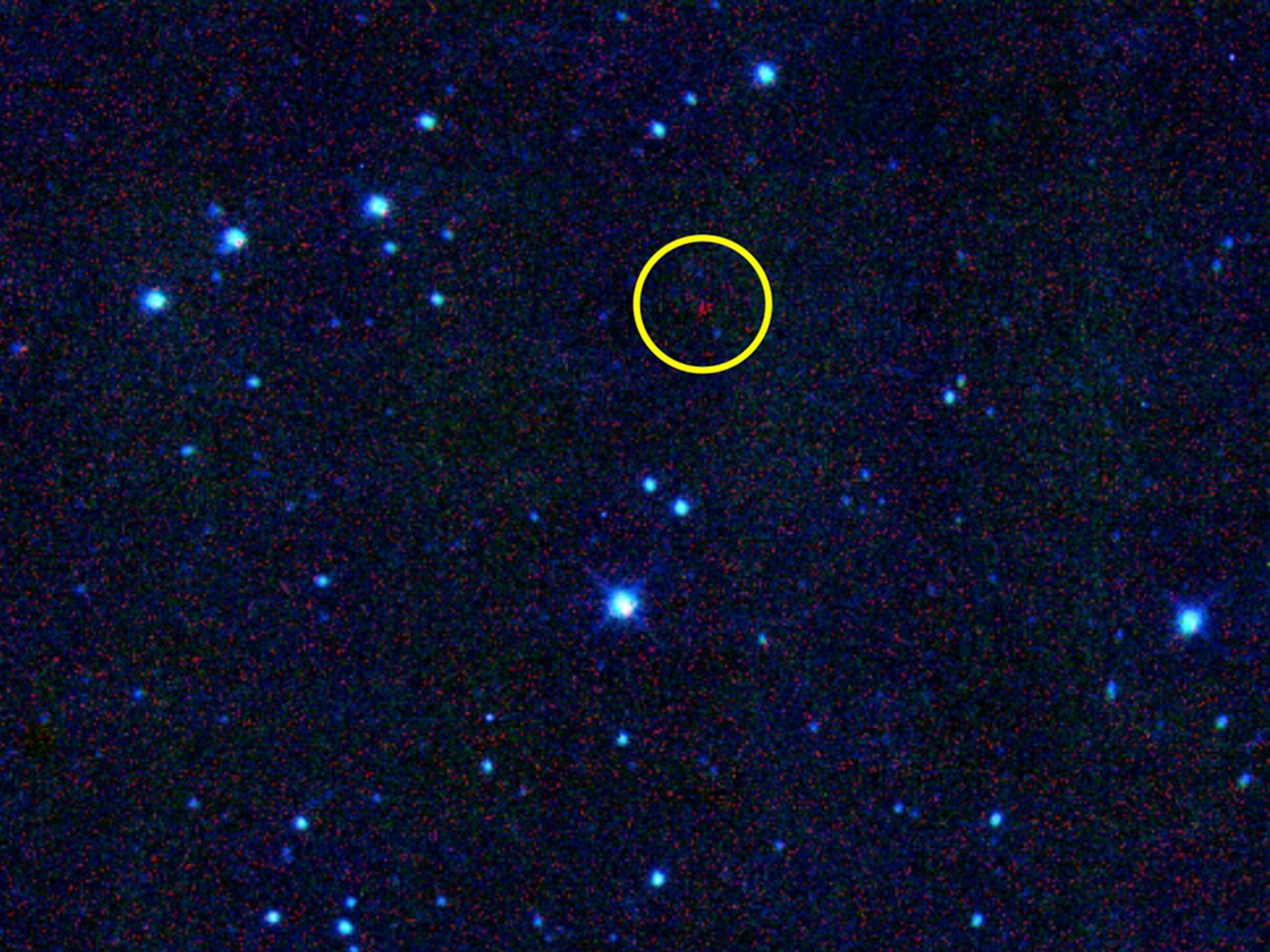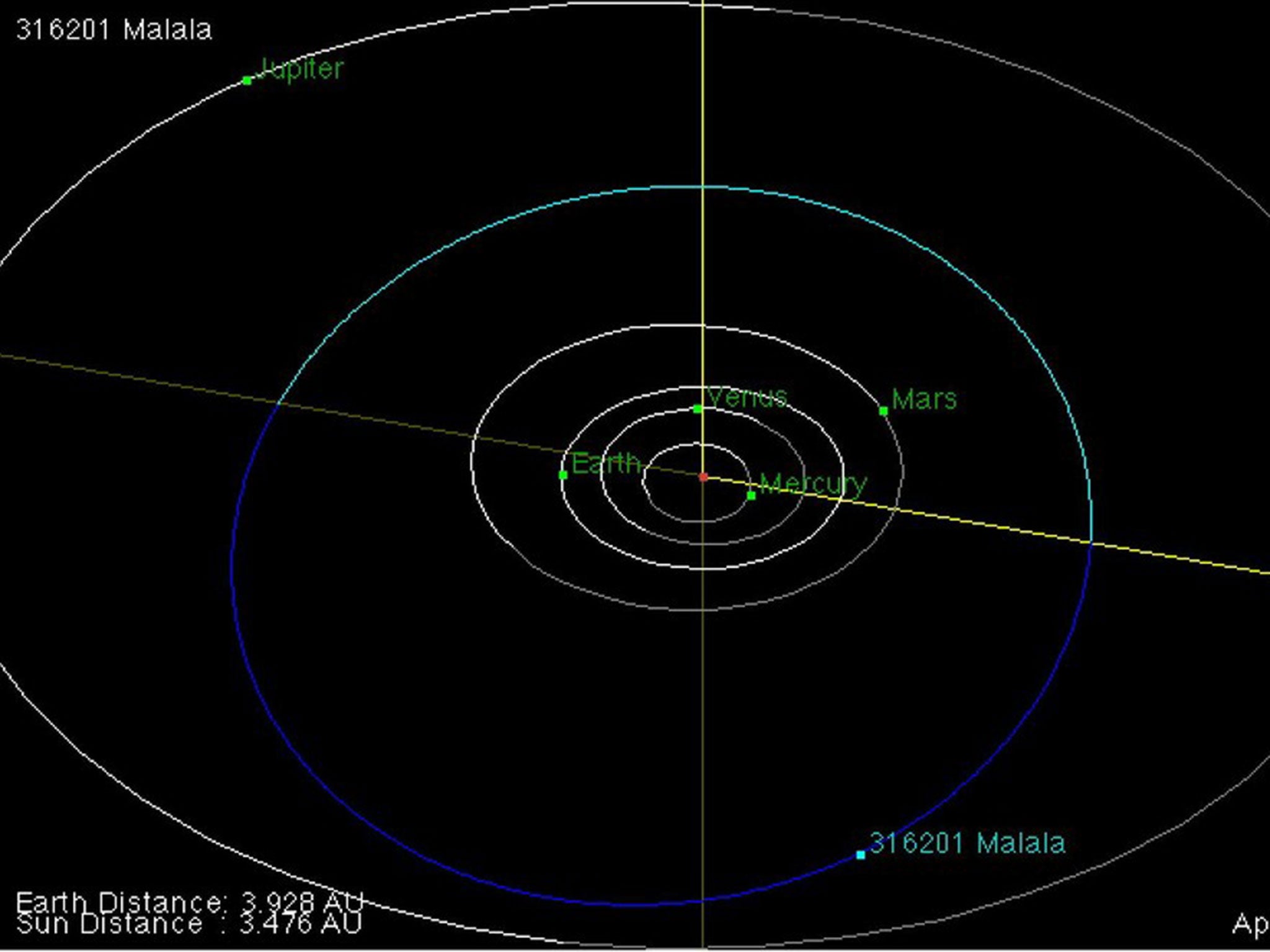Malala Yousafzai has asteroid named after her by Nasa scientist inspired by her 'amazing story'
Dr Amy Mainzer said she was inspired by the 17-year-old's brave activism

An asteroid orbiting between Mars and Jupiter has been named after Malala Yousafzai.
The Nasa astronomer who discovered it five years ago said she chose the name to honour the 17-year-old Nobel Prize winner.
Dr Amy Mainzer, who works at the space agency’s jet propulsion laboratory in California, said she was inspired by a colleague who pointed out that of the many named asteroids, few honoured the contributions of women and even fewer were from ethnic minorities.

“(Dr Carrie Nugent) and I read about Malala's amazing story and thought that if anyone deserves to have an asteroid named after them, she does,” Dr Mainzer added.
Malala, co-recipient of the 2014 Nobel Peace Prize, was shot in the head in an attempted assassination attempt by the Pakistani Taliban on a school bus in 2012.
She was targeted for her campaign against the extremist group’s crackdown on girls’ education, following years of blogging and interviews.

After emergency medical treatment in the UK, Malala took the issue to the United Nations and beyond and now heads a charity supporting education for girls worldwide.
Dr Mainzer said she hoped the asteroid’s name would remind young people that “science and engineering are for everyone".
“We desperately need the brainpower of all smart people to solve some of humanity's most difficult problems, and we can't afford to reject half the population's,” she wrote.

The scientist discovered Asteroid 316201 on 23 June 2010 and has the right to name it under International Astronomical Union rules.
The black rock is four kilometres wide and orbits the sun every five-and-a-half years as part of the main asteroid belt between Mars and Jupiter.
Join our commenting forum
Join thought-provoking conversations, follow other Independent readers and see their replies
Comments
Bookmark popover
Removed from bookmarks